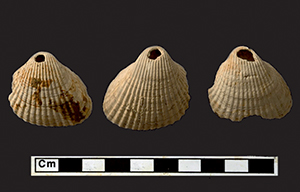Article contents
Wearing environment and making islands: Britain's Bronze Age inland north sea
Published online by Cambridge University Press: 09 October 2015
Abstract

Dramatic environmental changes have had an enormous impact on human populations in the past, sometimes expressed through objects that might easily be overlooked. The later prehistory marine inundations within the fenland of East Anglia—and the eventual creation of its islanded marsh-landscape—demanded a social response open to investigation. Did they alter the ways that communities expressed their identity? Did larger communities develop to exploit the new economic potential of things such as salt? Behind these major shifts, smaller signifiers such as shell necklaces may offer clues about use of resources and the identity of those who lived through these changes.
Keywords
- Type
- Research
- Information
- Copyright
- Copyright © Antiquity Publications Ltd, 2015
References
- 1
- Cited by




